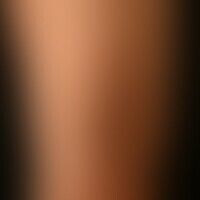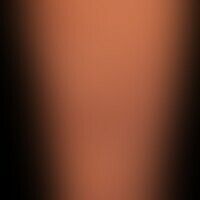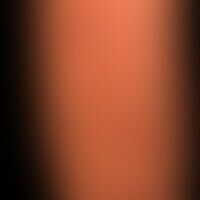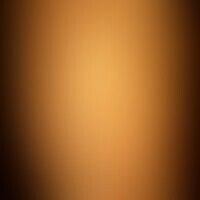Image diagnoses for "Nodules (<1cm)", "red", "Leg/Foot"
49 results with 88 images
Results forNodules (<1cm)redLeg/Foot

Lichen planus exanthematicus L43.81
Lichen planus exanthematicus. for 2 months persistent, itchy, generalized, dense itchy rash with emphasis on trunk and extremities (face not affected). on the cheek mucosa there are pinhead-sized whitish papules.

Angiokeratoma circumscriptum D23.L
Angiokeratoma circumscriptum: Vascular (venous) malformation of the skin (and subcutis) with circumscribed, aggregated moderately firm, blue-grey verrucous, painless plaques and nodules; varicosis of the surrounding area.

Brucellosis (overview) A23.9

Skabies B86
Scabies: chronic (existing for months) generalized, "eczematous" enormous, especially nightly itchy disease pattern with duct-like configured, rough papules.

Pityriasis lichenoides chronica L41.1
Pityriasis lichenoides chronica:slightly itchy maculo-papular exanthema which hasbeenpresent for several months; here detailed picture of the lower leg.

Insect bites (overview) T14.0
Insect bites (overview): acutely occurring, disseminated, itchy blisters and pustules with reddened courtyard.

Hypereosinophilic dermatitis D72.1
Dermatitis, hypereosinophilic: generalized, partly papular, partly plaque-like, considerably itchy exanthema with disseminated, 0.3-1.5 cm large, red, papules which have merged into plaques in the middle of the thigh.

Pityriasis lichenoides chronica L41.1
Pityriasis lichenoides chronica. close-up. very polymorphic picture with densely packed, differently sized scaly erythema, papules and confluent plaques.

Pityriasis lichenoides chronica L41.1
Pityriasis lichenoides chronica: 16-year-old, otherwise healthy patient, with a polymorphic papular exanthema on the trunk and extremities, which has been present for several months and is intermittent. no itching. no other symptoms. the lesions heal with a delicate depigmented scar.

Lichen planus classic type L43.-
Lichen planus. chronically active, multiple, disseminated or confluent, increasing, first appearing about 6 months ago, mainly localized at the outer edge and back of the foot, 0.3-0.6 cm large, itchy, red, smooth, shiny papules in a 46-year-old woman. Furthermore, a whitish, reticular pattern of the buccal mucosa of the mouth was visible.

Drug reaction lymphocytic T88.7
drug reaction, lymphocytes: multiple, non-symptomatic, surface-smooth papules and plaques. occurred several months after cardiological readjustment. patient otherwise healthy. no evidence of lymphatic systemic disease. no other drugs. histological: nodular, mature lymphocytic tissue. no lymph follicles.

Early syphilis A51.-
Syphilis acquisita: papular, completely asymptomatic (recurrent) exanthema (no itching) Important: generalized lymphadenopathy.

Dermatofibroma hemosiderin storing D23.L

Collagenosis reactive perforating L87.1

Cutaneous botryomycosis L98.0
Botryomycosis. less spectacular clinical findings. circumscribed, less painful area with pustules, nodules and extensive induration. the diagnosis was histologically confirmed by evidence of a deep granulomatous inflammation with abscesses and the presence of eosinophilic granules, the so-called Splendore-Hoeppli phenomenon.









